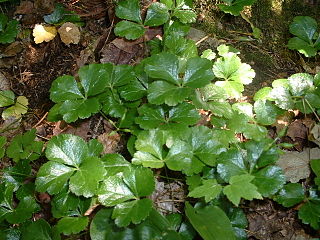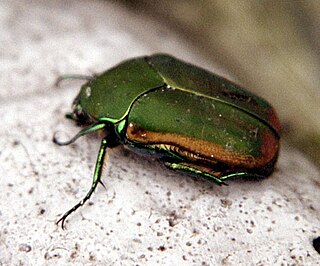
The mantle is a significant part of the anatomy of molluscs: it is the dorsal body wall which covers the visceral mass and usually protrudes in the form of flaps well beyond the visceral mass itself.

Limax maximus, known by the common names great grey slug and leopard slug, is a species of slug in the family Limacidae, the keeled slugs. It is among the largest keeled slugs, Limax cinereoniger being the largest.

The black slug, Arion ater, is a large terrestrial gastropod mollusk in the family Arionidae, the round back slugs. Many land slugs lack external shells, having a vestigial shell. Most slugs retain a remnant of their shell, which is usually internalized, unlike other terrestrial mollusks which have external shells. Without such shells, slugs produce mucus, that may also contain toxins—to deter predators. Terrestrial slugs produce two other forms of mucus that facilitate locomotion and prevent death from drying. Such mollusks are hermaphroditic. Slugs most often function as decomposers but are also often omnivores. Arion ater is one such slug, decomposing organic matter, preying on other organisms, and consuming vegetative matter including agricultural crops. Native to Europe, the black slug is an invasive species in Australia, Canada, and the United States.

The Limacodidae or Eucleidae are a family of moths in the superfamily Zygaenoidea or the Cossoidea; the placement is in dispute. They are often called slug moths because their caterpillars bear a distinct resemblance to slugs. They are also called cup moths because of the shape of their cocoons.

Coptis trifolia, commonly known as the threeleaf goldthread or savoyane, is a perennial plant in the genus Coptis, a member of the family Ranunculaceae.

Echinacea purpurea, the eastern purple coneflower, purple coneflower, hedgehog coneflower, or echinacea, is a North American species of flowering plant in the family Asteraceae. It is native to parts of eastern North America and present to some extent in the wild in much of the eastern, southeastern and midwestern United States as well as in the Canadian Province of Ontario. It is most common in the Ozarks and in the Mississippi/Ohio Valley. Its habitats include dry open woods, prairies and barrens.

Kuehneromyces mutabilis, commonly known as the sheathed woodtuft, is an edible mushroom that grows in clumps on tree stumps or other dead wood. A few other species have been described in the genus Kuehneromyces, but K. mutabilis is by far the most common and best known.

Hibiscus mutabilis, also known as the Confederate rose, Dixie rosemallow, cotton rose or cotton rosemallow, is a plant long cultivated for its showy flowers. Originally native to southern China, it is now found on all continents except Antarctica.

Philomycidae are a family of air-breathing land slugs. They are terrestrial pulmonate gastropod mollusks in the superfamily Arionoidea.

Cotinis mutabilis, also known as the figeater beetle, is a member of the scarab beetle family. It belongs to the subfamily Cetoniinae, comprising a group of beetles commonly called flower chafers since many of them feed on pollen, nectar, or petals. Its habitat is primarily the southwestern United States and Mexico. Figeater beetles are often mistaken for green June beetles and occasionally Japanese beetles, which occur in the eastern US.

Microdon mutabilis, is a species of hoverfly. It is found in many parts of Britain and Europe. The distinctive almost slug-like larvae live in ants' nests. They are hemispherical in shape, heavily armoured and believed to prey on the eggs and larvae of a number of ant species, including Formica lemani, Formica fusca, Lasius niger and Myrmica ruginodis. It was described by Carl Linnaeus in his landmark 1758 10th edition of Systema Naturae.

Freshwater snails are gastropod mollusks that live in fresh water. There are many different families. They are found throughout the world in various habitats, ranging from ephemeral pools to the largest lakes, and from small seeps and springs to major rivers. The great majority of freshwater gastropods have a shell, with very few exceptions. Some groups of snails that live in freshwater respire using gills, whereas other groups need to reach the surface to breathe air. In addition, some are amphibious and have both gills and a lung. Most feed on algae, but many are detritivores and some are filter feeders.
A. californica may refer to:

Megapallifera is a genus of air-breathing land slugs, terrestrial pulmonate gastropod mollusks in the family Philomycidae.

Stachytarpheta mutabilis is a species of flowering plant in the verbena family known by the common names changeable velvetberry, coral porterweed, pink snakeweed, red snakeweed, and pink rat tail. It is native to Mexico, the Caribbean, and South America. It can be found in many other places as an introduced species. It is cultivated as an ornamental plant.

Cotinis is a genus of scarab beetles in the subfamily Cetoniinae found throughout North and South America. At least two species are common pests. The genus was erected by Hermann Burmeister in 1842.

Aeolidiella alderi is a species of sea slug, an aeolid nudibranch in the family Aeolidiidae. It is native to northwestern Europe where it occurs in the intertidal zone. It is a predator and feeds on sea anemones.

Cryptosula pallasiana is a species of colonial bryozoan in the order Cheilostomatida. It is native to the Atlantic Ocean where it occurs in northwestern Europe and northern Africa, and the eastern seaboard of North America. It has been accidentally introduced to the western coast of North America and to other parts of the world.
Cryptocephalus mutabilis is a species of case-bearing leaf beetle in the family Chrysomelidae. It is found in North America.

Amanita mutabilis is a species of Amanita from eastern United States. Amanita mutabilis has pink tones on the cap and stem, and will turn pink when its flesh is cut; it smells of anise.

















